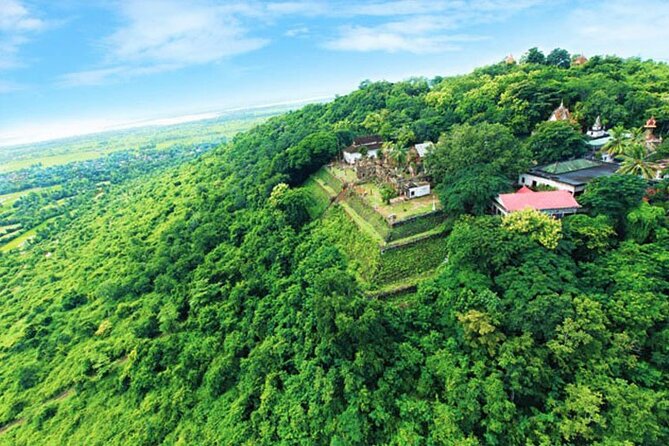Chisor Mountain

Phnom Chiso (also known as Chiso Mountain) is a historically significant site located approximately 62 kilometers south of Phnom Penh, Cambodia, in Takeo Province. This 130-meter-high hill is renowned for its ancient temple, Prasat Phnom Chiso, which offers a blend of architectural beauty and panoramic views of the surrounding countryside.
Historical Significance
Prasat Phnom Chiso was constructed in the early 11th century by King Suryavarman I (reigned 1002–1050), who practiced Brahmanism. The temple was originally dedicated to the Hindu deities Shiva and Vishnu and was named Sri Suryaparvata, meaning "The Mountain of Surya." Built using sandstone and laterite, the temple complex includes two galleries and features intricately carved sandstone lintels and pillars, showcasing the architectural prowess of the Khmer Empire .Wikipedia+3Green Era Travel+3Tourism Cambodia+3Wikipedia+1Peek+1Peek+4Cambodia Expats Online+4Green Era Travel+4
Scenic Views and Architecture
Visitors to Phnom Chiso can ascend the mountain via a staircase with 390 steps on the west side or 408 steps on the south side. At the summit, the temple offers breathtaking views of the surrounding rice fields and countryside. The layout of the temple is aligned with significant features in the landscape, including the Sen Roveang Temple, Sen Nimol Temple, and the ancient baray known as Tonle Om, which was considered sacred by Brahmans and used for ritual purification .Cambodia Expats Online+2Tourism Cambodia+2Green Era Travel+2Tourism Cambodia+2Wikipedia+2Green Era Travel+2
Cultural and Religious Importance
In addition to its historical and architectural significance, Phnom Chiso remains a site of cultural and religious importance. The area includes a modern Phnom Chiso Pagoda, constructed in 1917 and rebuilt in 1979 after being damaged during the Khmer Rouge era. Behind the pagoda is a hall called Thammasaphea, which serves as a worship place. An ancient water tank made of concrete is also present, adding to the site's spiritual ambiance .